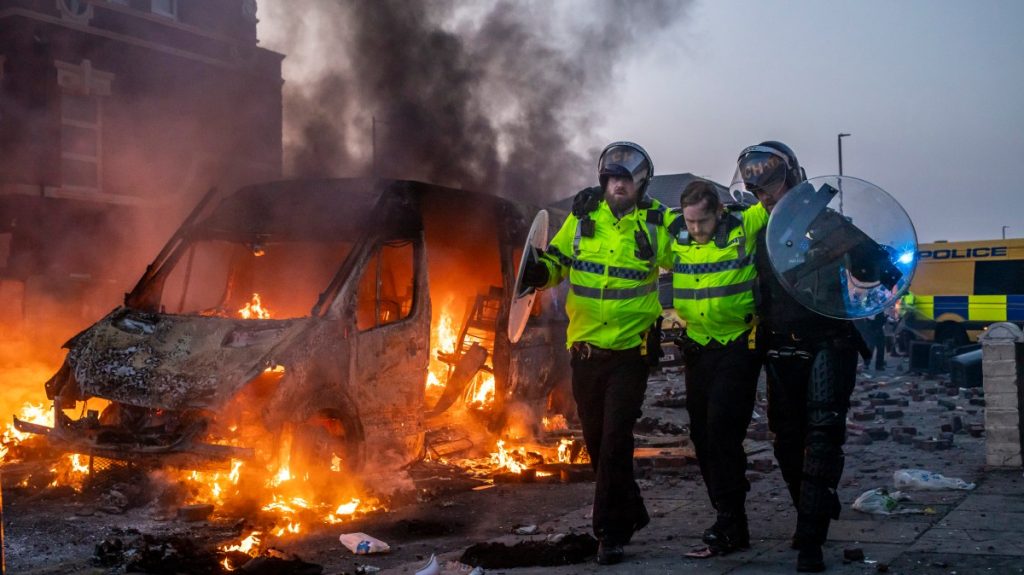Southport Tragedy: Misinformation Fuels Unrest Following Triple Murder at Dance Class
Southport, UK – A damning report released by the Home Affairs Committee has revealed critical failings in the handling of public information following the tragic murder of three young girls at a Taylor Swift-themed dance class in Southport last July. The report highlights how "inconsistent advice" from the Crown Prosecution Service (CPS) regarding the public disclosure of the attacker’s identity and background created an information vacuum that was rapidly filled with misinformation, ultimately fueling public disorder and exacerbating the community’s grief.
The attacker, later identified as 17-year-old Axel Rudakubana, brutally killed the three girls during the dance class on July 29th. Due to his age, legal restrictions prevented authorities from publicly naming him. This information void, coupled with the CPS’s ambiguous guidance on revealing Rudakubana’s Christian background, became fertile ground for false narratives. The most damaging of these was the widespread belief that the perpetrator was an asylum seeker named Ali Al-Shakati, falsely rumored to have arrived in the UK by boat earlier that year. This misinformation quickly spread through social media and online forums, inflaming tensions and contributing to the unrest that followed the tragedy.
The report meticulously details the sequence of events leading up to and following the attack, emphasizing the communication breakdown between the police and the CPS. While police sought to clarify Rudakubana’s identity and background to counter the burgeoning misinformation, they were hampered by conflicting advice from the CPS. This hesitation, born out of concerns about prejudicing any future trial, inadvertently created the perfect conditions for false narratives to take root and spread. The committee concluded that this lack of clear and consistent communication from the authorities was a significant factor in the escalation of public disorder.
The report also underscores the devastating consequences of misinformation in such a sensitive context. The false narrative surrounding the attacker’s identity fueled anti-immigrant sentiment and stoked community tensions. This not only exacerbated the grief and trauma experienced by the victims’ families and the wider community but also created an environment of fear and mistrust. The committee emphasized the urgent need for clear protocols and improved communication strategies between law enforcement and prosecuting authorities to prevent similar incidents from occurring in the future. They called for a review of existing guidelines relating to the identification of juvenile offenders, balancing the need for public transparency with the imperative to protect the integrity of legal proceedings.
Beyond the immediate impact on the Southport community, the report highlights the broader societal dangers posed by the rapid spread of misinformation in the digital age. The ease with which false narratives can be disseminated and amplified online necessitates a proactive and coordinated response from authorities. The committee stressed the importance of establishing robust mechanisms for identifying and countering misinformation, particularly during times of crisis or heightened public anxiety. They also emphasized the role of social media platforms in tackling the spread of harmful content and the need for greater media literacy among the public.
The Southport tragedy serves as a stark reminder of the devastating real-world consequences of misinformation. The report’s findings offer crucial lessons for law enforcement, prosecuting authorities, and social media platforms on the importance of clear communication, timely intervention, and effective strategies for combating the spread of false narratives. By learning from the failures identified in this case, it is hoped that future tragedies can be mitigated and communities better protected from the harmful effects of misinformation. The committee’s recommendations, if implemented effectively, could significantly enhance the ability of authorities to manage sensitive information during critical incidents, preserving public trust and preventing the spread of damaging falsehoods that can fuel unrest and exacerbate community trauma. The report serves as a call to action for a concerted effort to address the growing threat of misinformation and its potential to undermine social cohesion and inflict lasting harm.


